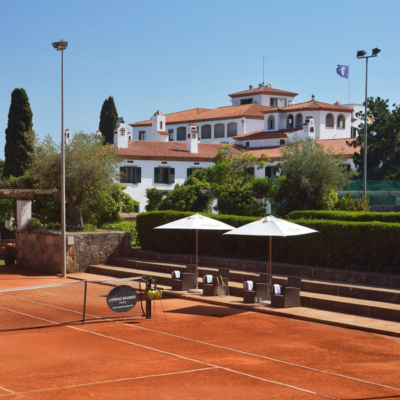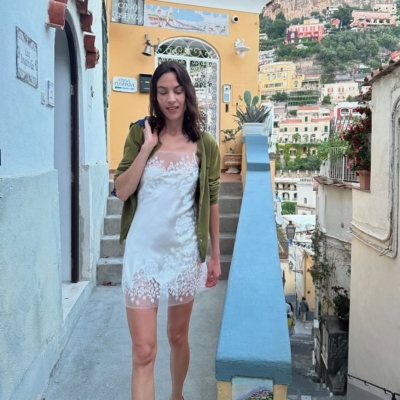The National Gallery of Ireland’s new exhibition on Irish artist George Wallace is quite a coup as Anne Hodge, Curator of Prints and Drawings, relates …
How did the George Wallace exhibition come about and what is its significance?
It is the first time in 50 years that Irish art lovers will be able to enjoy the work of this wonderful artist. The show focuses on George Wallace’s graphic work and covers the whole of his career. It begins with abstract etchings inspired by the strange industrial landscape of St Austell in Cornwall and finishes with powerful monotype “portraits” of people weighed down by the pressures of life.
In the early 1950s George Wallace was an up-and-coming Dublin artist who showed his work at the Irish Exhibition of Living Art alongside artists like Louis Le Brocquy and Evie Hone. He emigrated to Canada in 1957 and spent the rest of his life living and working there. After his death in 2009 his family wanted some of his work to return to his birthplace. The artist’s son Kit, came to see me in 2015 with a folder of his father’s prints. As I viewed them I was immediately impressed by the high level of skill present and moved by the raw depictions of vulnerable humanity. Happily, in 2016, the Gallery Board accepted the Wallace family’s generous gift of over 250 items. This means that the National Gallery of Ireland holds the best collection of George Wallace’s work outside Canada.
From the start I was keen to showcase Wallace’s unique prints in a special stand-alone exhibition in the Print Gallery. It was difficult choosing just 60 works to display as there was so much to choose from. To help viewers navigate Wallace’s career I have divided the works up into thematic sections: early abstract prints; biblical imagery; heads; and the melancholic yet humorous monotypes of his later years.

Wallace’s work is quite diverse ranging from abstracts to satirical work and monotype prints. What is he best known for?
In Canada Wallace is probably best known for his sculpture. A dramatically coloured large-scale angel features on the cover of a recently published book Sculpture in Canada. Following his move to Canada in 1957 he concentrated on welded sculpture but continued making prints in a variety of techniques including lithography, etching and woodcut. He was a gifted teacher and ended his career as Professor of Art at McMaster University in Hamilton, Ontario. As a result, he rarely exhibited publicly and his graphic work was not well known. On retirement from McMaster he returned to printmaking in earnest. For me, the large-scale, expressive monotypes he made in the 1980s and 1990s represent the coming together of his skilfulness as a printmaker with his sensibility as a philosopher and recorder of life. They are unique, strangely compelling images.

What were some of the common themes and threads of his work?
Biblical imagery appears repeatedly in his work. His early education gave him a deep knowledge of the Bible. Although his youthful vocation faded away, the key stories of the Christian faith provided him with rich subject matter for years to come. He focused on the humanity and frailty of biblical figures such as St Peter and Lazarus, imagining their feelings of sorrow, doubt and confusion. Lazarus, a miraculous figure of hope, first makes an appearance in 1956 and Wallace returned to this character numerous times in later decades.
Much of his work is rooted in his deep concern for humanity. Like Goya, Käthe Kollwitz and Georges Rouault, artists he greatly admired, Wallace used his art to comment on the state of the world. Some of his most powerful prints focus on human faces that express grief, loss and pain caused by war and oppression.

What are some of the highlights of the exhibition at the National Gallery of Ireland – have you any favourites?
One of my favourites is a quirky self-portrait in which his tossed hair has the appearance of horns giving him a faintly devilish appearance. A good example of the dark sense of humour that lurks in many of his prints.

I also love the series of twelve etchings from 1995 “Summer Shadows Summer Dreams”. In these Wallace comments on society’s obsession with the small screen. Each image shows people lounging about in various states of undress, a TV set their constant companion. For these people, watching glamorous soap operas keeps feelings of failure, boredom and anxiety at bay.
Another favourite is a delicate pen and ink drawing of a deserted landscape. It could depict the ravaged hills of the clay pits at St Austell, or it could show the Avoca mines close to where he holidayed as a child. Either way, the drawing combines great sensitivity of line with a deep feeling for place.
Whether one is looking at his darkly humorous figurative works or the pared back, abstract compositions, George Wallace’s prints and drawings provide much interest for the eye and mind alike.

Need to Know: “George Wallace: Reflections on Life” is currently on at the National Gallery of Ireland in the Print Gallery, until December 13; www.nationalgallery.ie.
LOVETHEGLOSS.IE?
Sign up to our MAILING LIST now for a roundup of the latest fashion, beauty, interiors and entertaining news from THE GLOSS MAGAZINE’s daily dispatches.










